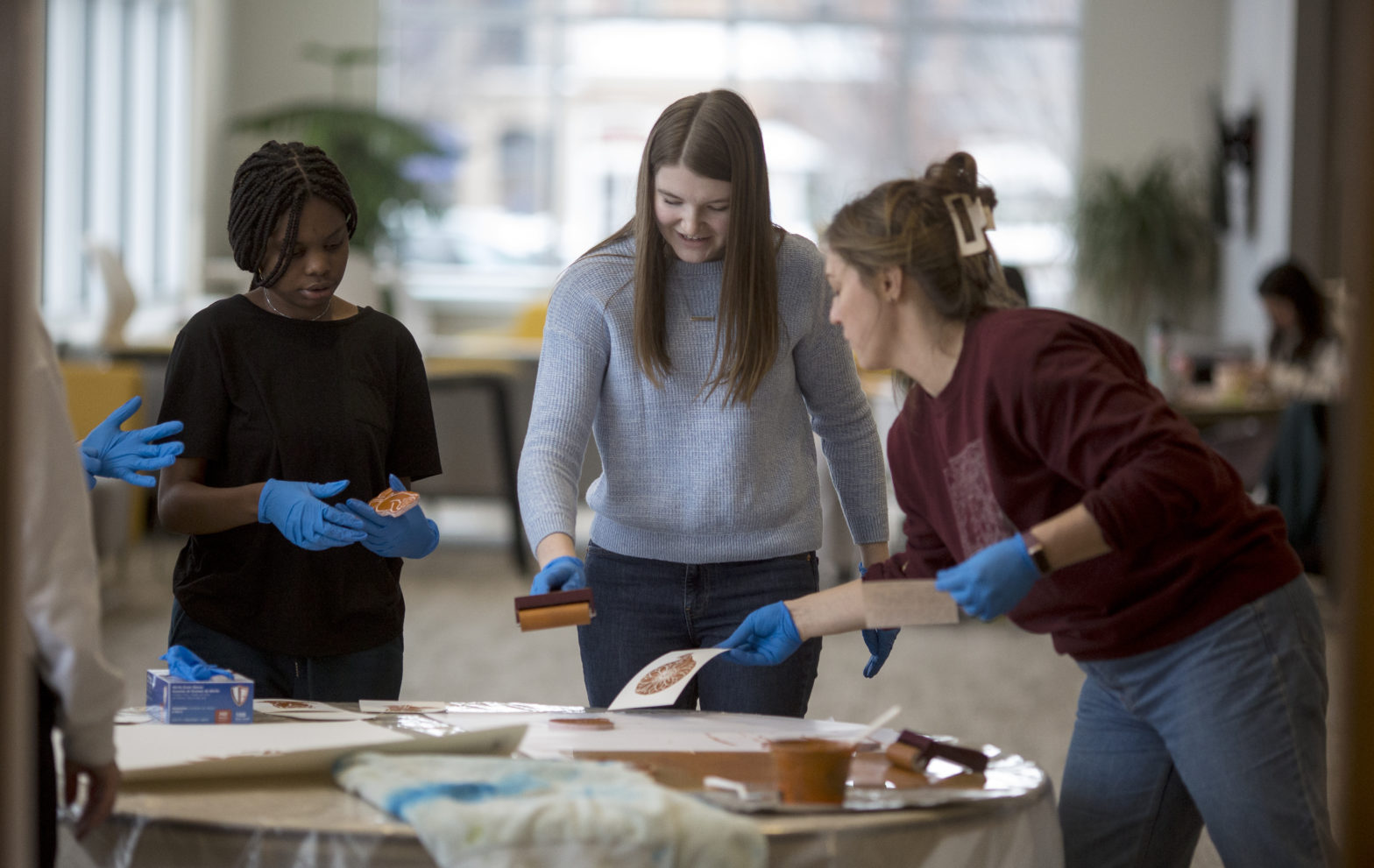In order to do the art project, students revisit the original essay they wrote during the Hope Forward application process and consider what their past means for their present and future. The following questions guide reflection:
Why did you apply to Hope Forward? Why did you apply to Hope College?
What has changed since last year? What has remained the same? How have you grown? Take some time to dream about your future self. What three words do you want your life to reflect? Using these reflections, students select a plant with a meaning that encompasses an identified aspect of themselves. As a guide, they explore the traditional meanings of plants within art history and across cultures. From there, students sketch their plant, carve a block, print their plant, and develop an artist’s statement.
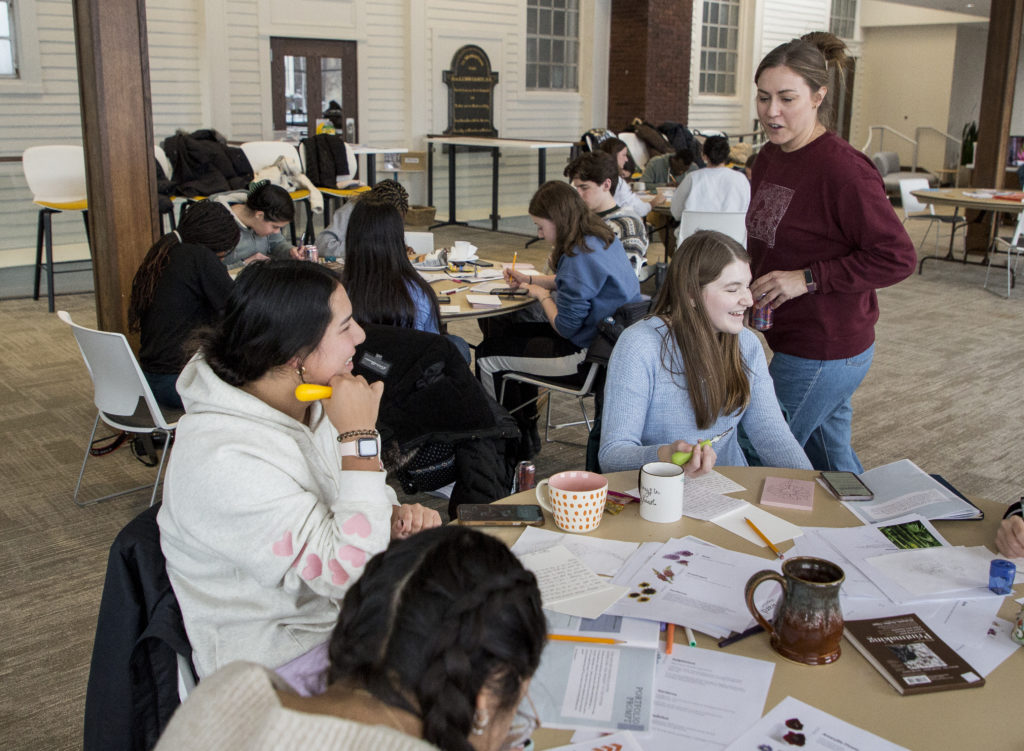
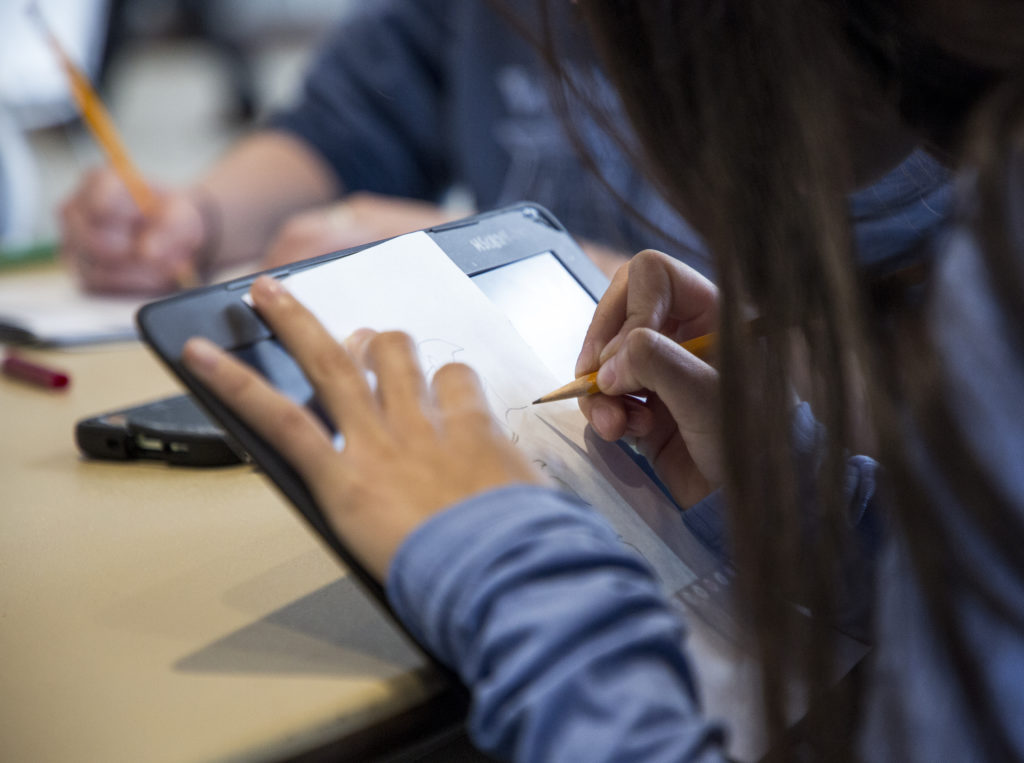
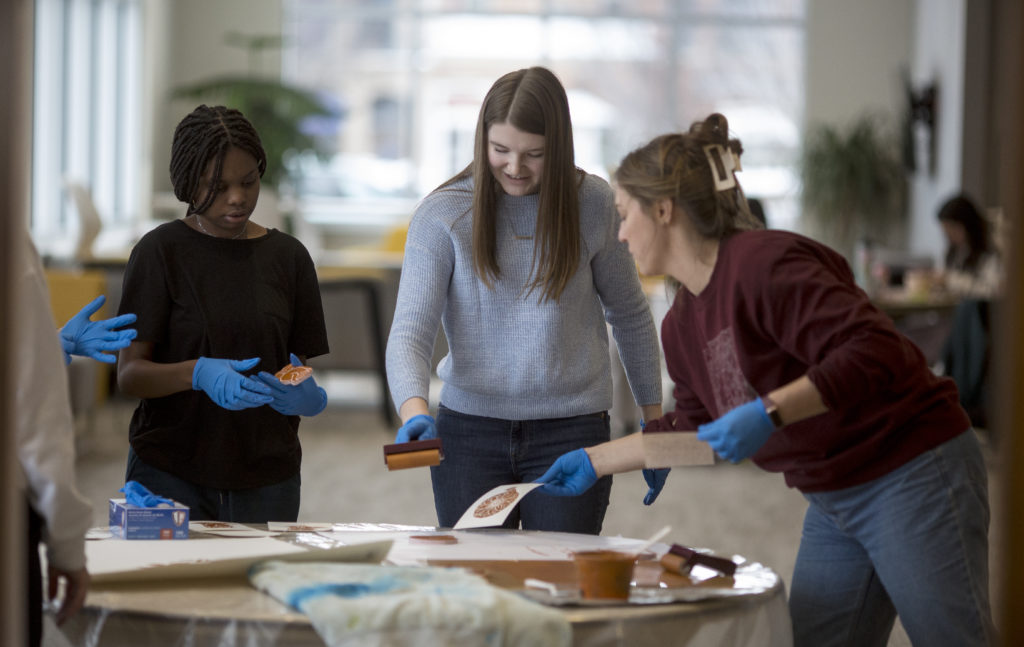
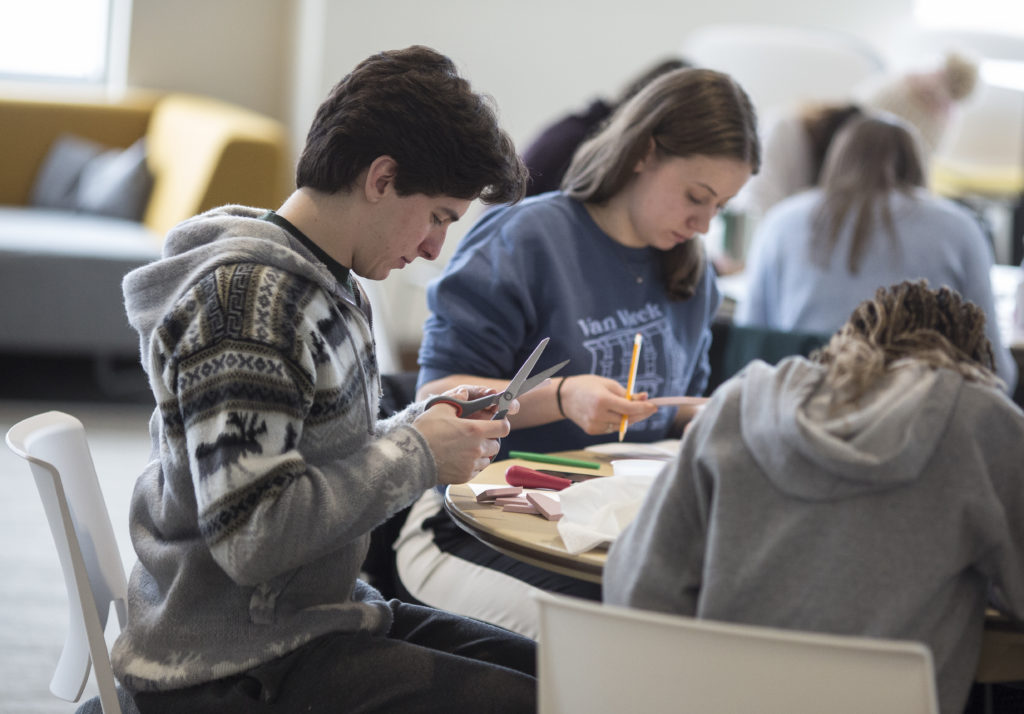
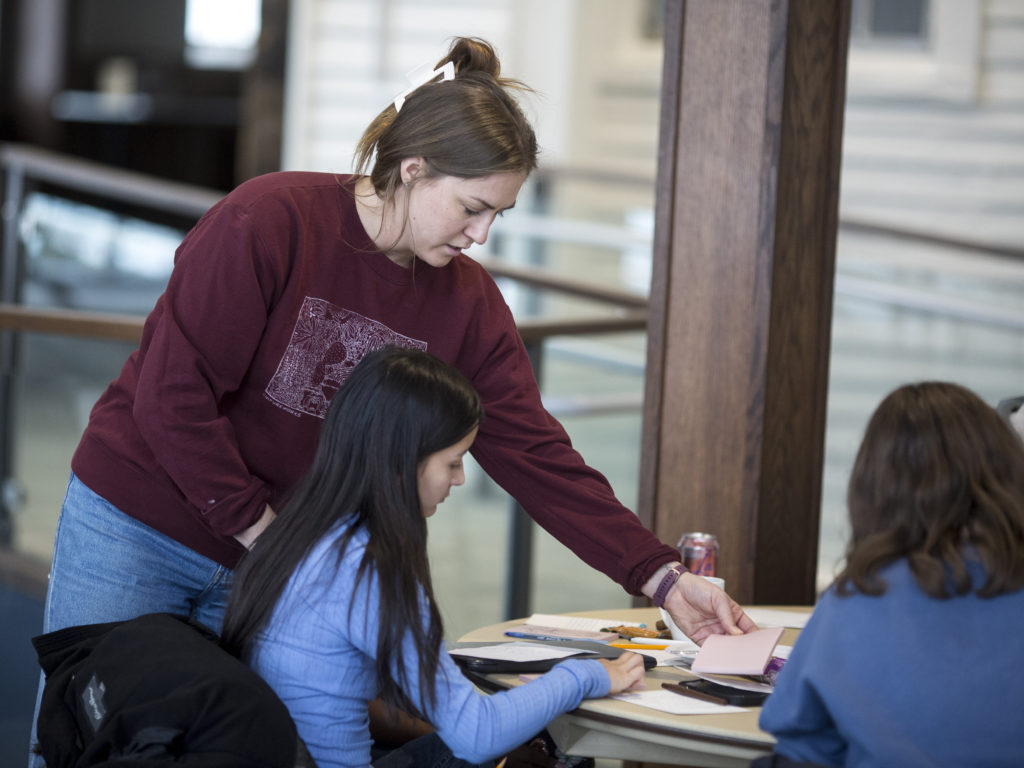
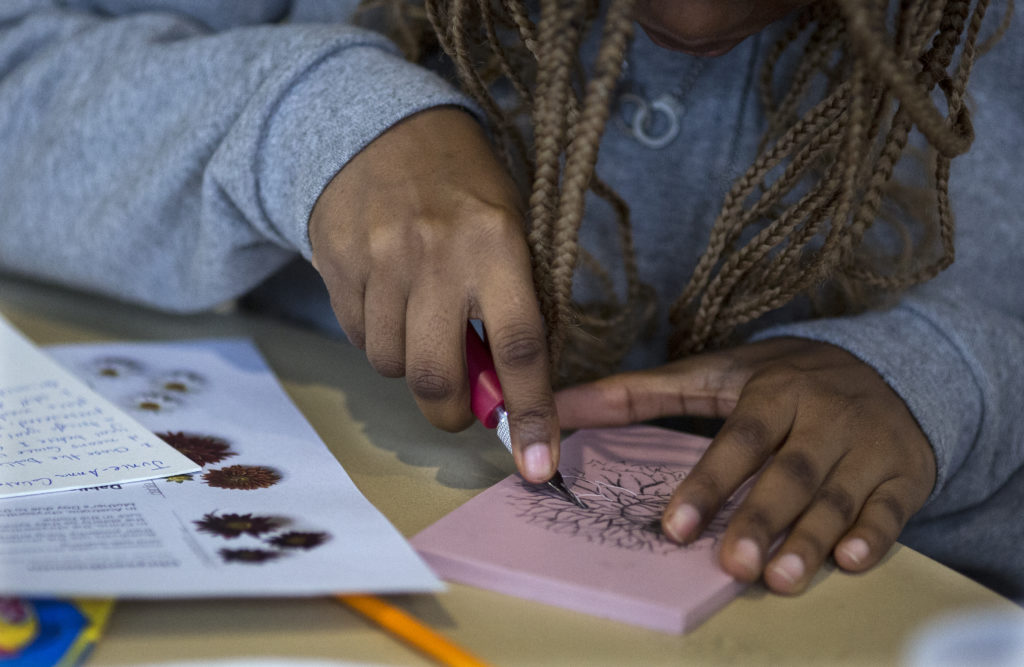
Each January, the freshmen Hope Forward students have a cohort retreat to develop a cohort community covenant, spend time in individual reflection and goal setting, and create block prints as a reflective exercise to consider their own strengths, growth and hope for future impact.
The following are a few of the prints and accompanying artists statements from the 2027 Cohort:
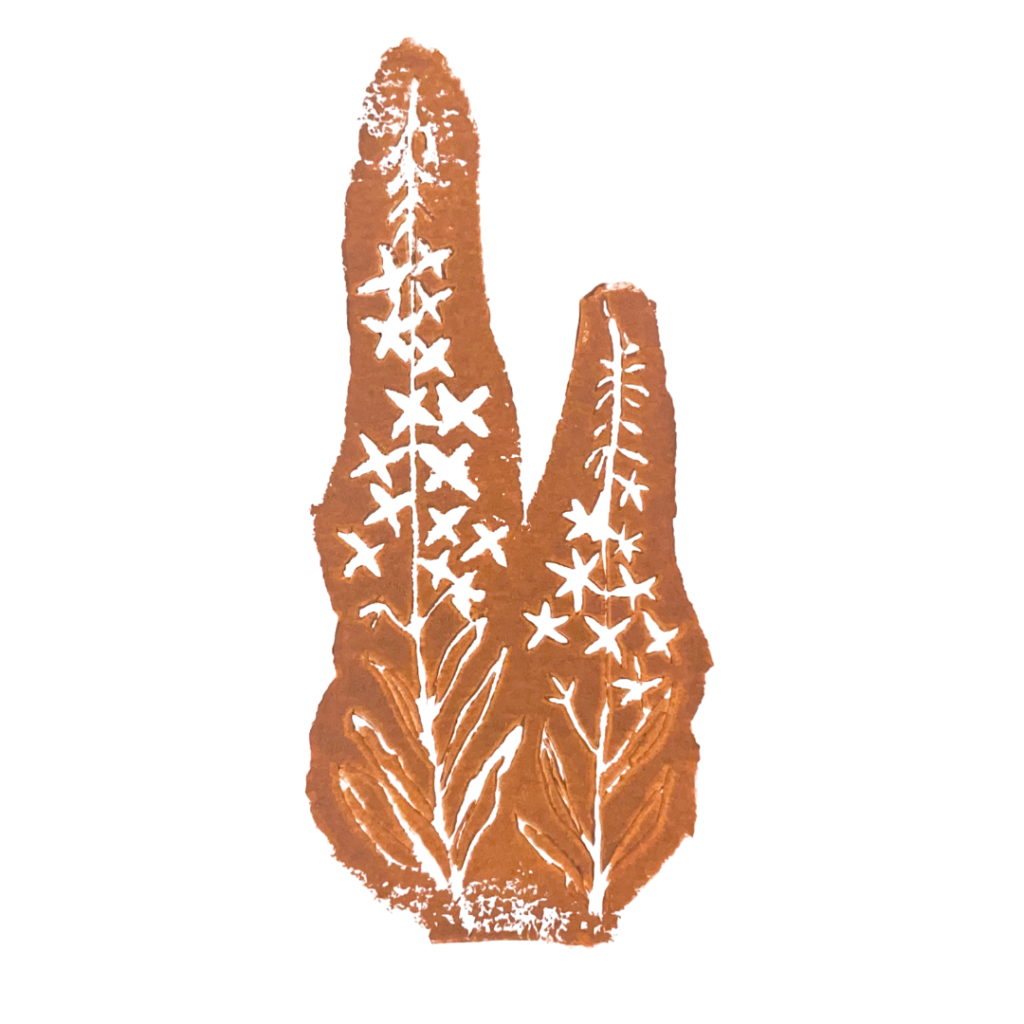
Fireweed is a plant that grows in Alaska in the summer; it springs up in areas that wildfires have swept through. Fireweed symbolizes persistence, peace, growth, community, beauty in areas of devastation, and healing.
Moving forward, these are qualities that I hope to demonstrate and share in my life. Ultimately, fireweed is a symbol of hope that can blossom even in situations that seem unredeemable. It is also a representation of my home state.
Hope springs up, always.
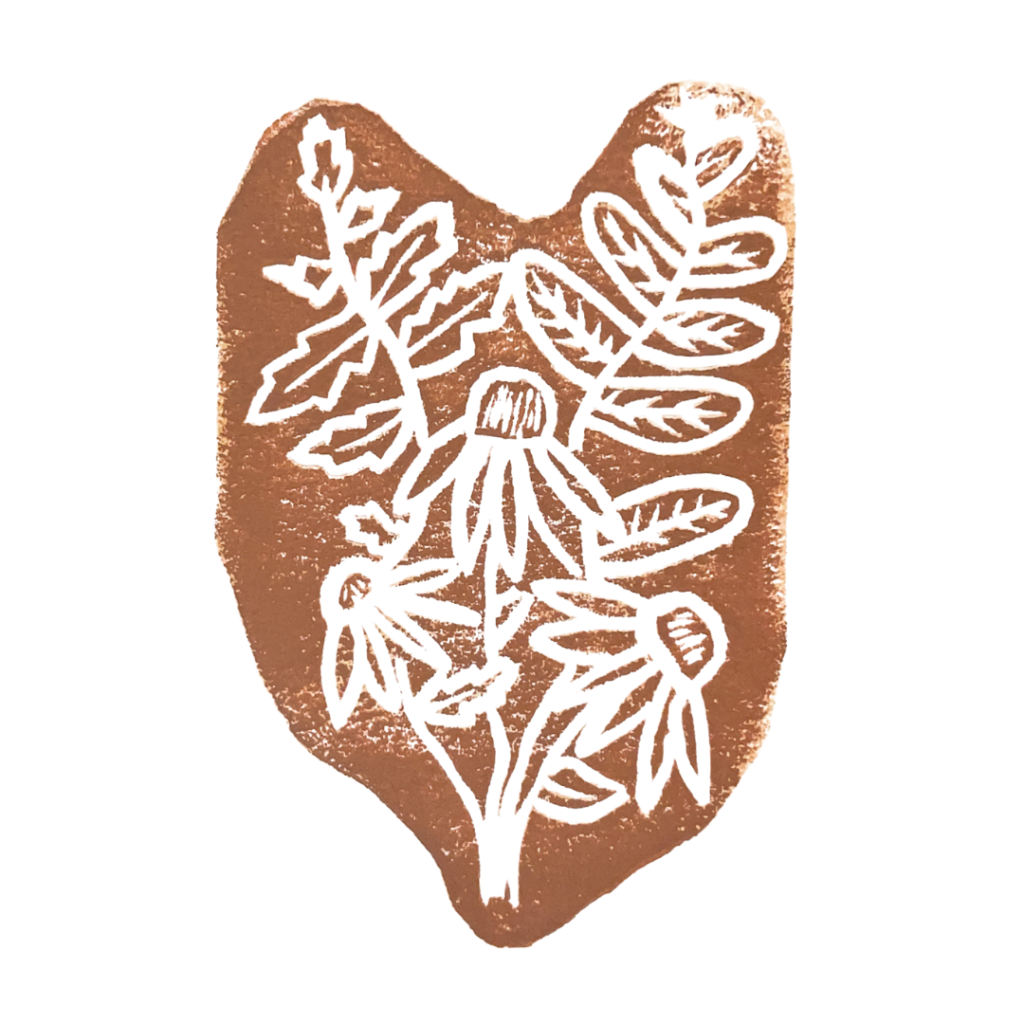
I decided to do a bouquet of herbs. I did this because I love to cook and add flavoring to my food. And, I want to be a nurse, so I chose to draw 3 healing herbs:
1) Echinacea—boosts the immune system and aids in healing. It is a symbol of strength, too.
2) Lemon balm—symbol for wisdom and calm.
3) Ashwagandha—reduces stress and anxiety, and promotes brain health. Its root word also means horse and stands for power.
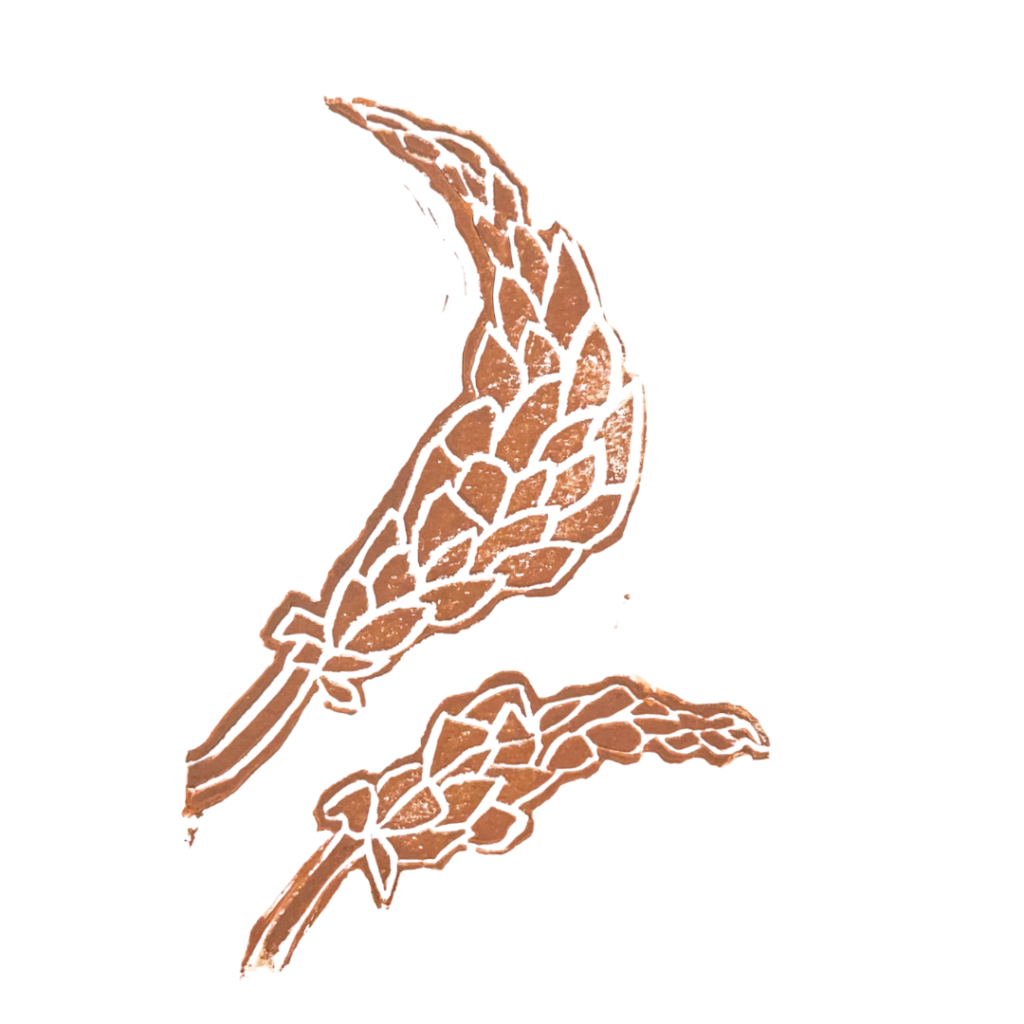
The snapdragon represents protection from evil. My whole life, I had been told that “that’s the way the world works” when I asked why there was so much hurt in the world. I strive to grow to be a world challenger. I want to bring up the uncomfortable conversation that might cause controversy. I chose to print two flowers to represent the duality that comes with going against the flow of the world. The side of fear and the side of thrill for change.
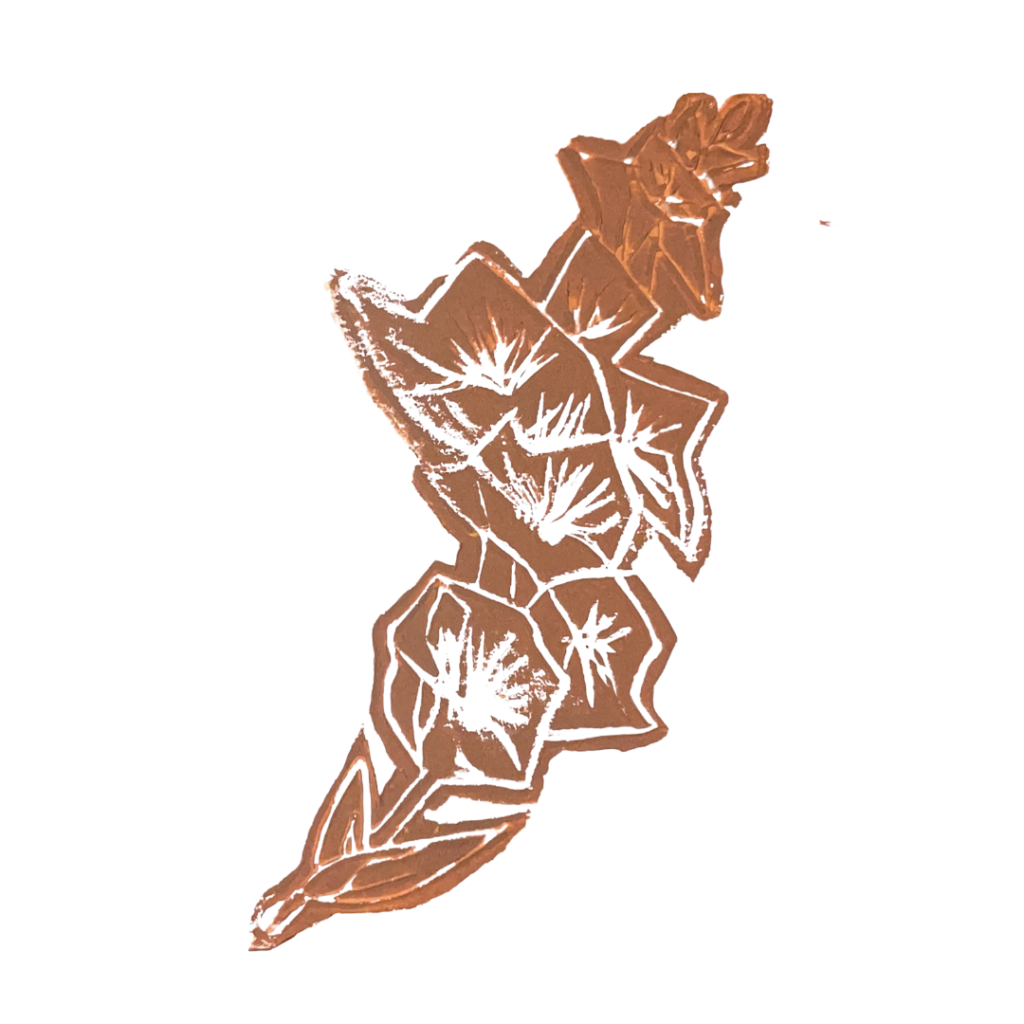
Gladiolus symbolizes strength of character, faithfulness and remembrance. The past few years have been really hard on me, and this flower reminds me of the strength I have and how I’m able to overcome anything with my faith in God. This flower also reminds me of my parents and I really want to become like them as I grow older.
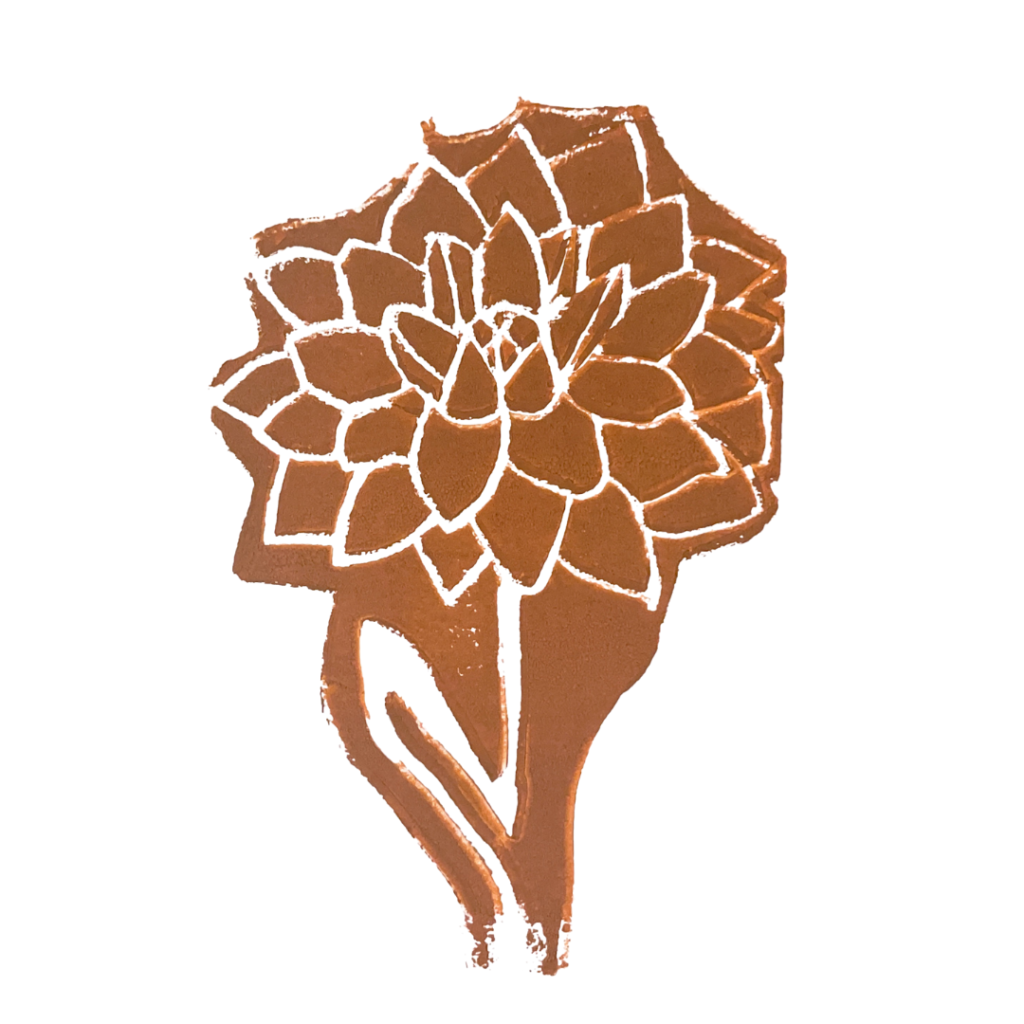
I chose to print a dahlia flower because of the significance: grace under pressure. Grace, especially in high pressure situations, is imperative to employ. Choosing grace over stress is a value I hold dear to my heart and has been instilled in me by my parents. Grace is also a word that reminds me to be resilient and be empowered by strength and give my worries to the Lord. Change is inevitable in life and a factor that is challenging for me to cope with. However, when choosing grace, all will be well and still in the light of the Lord.
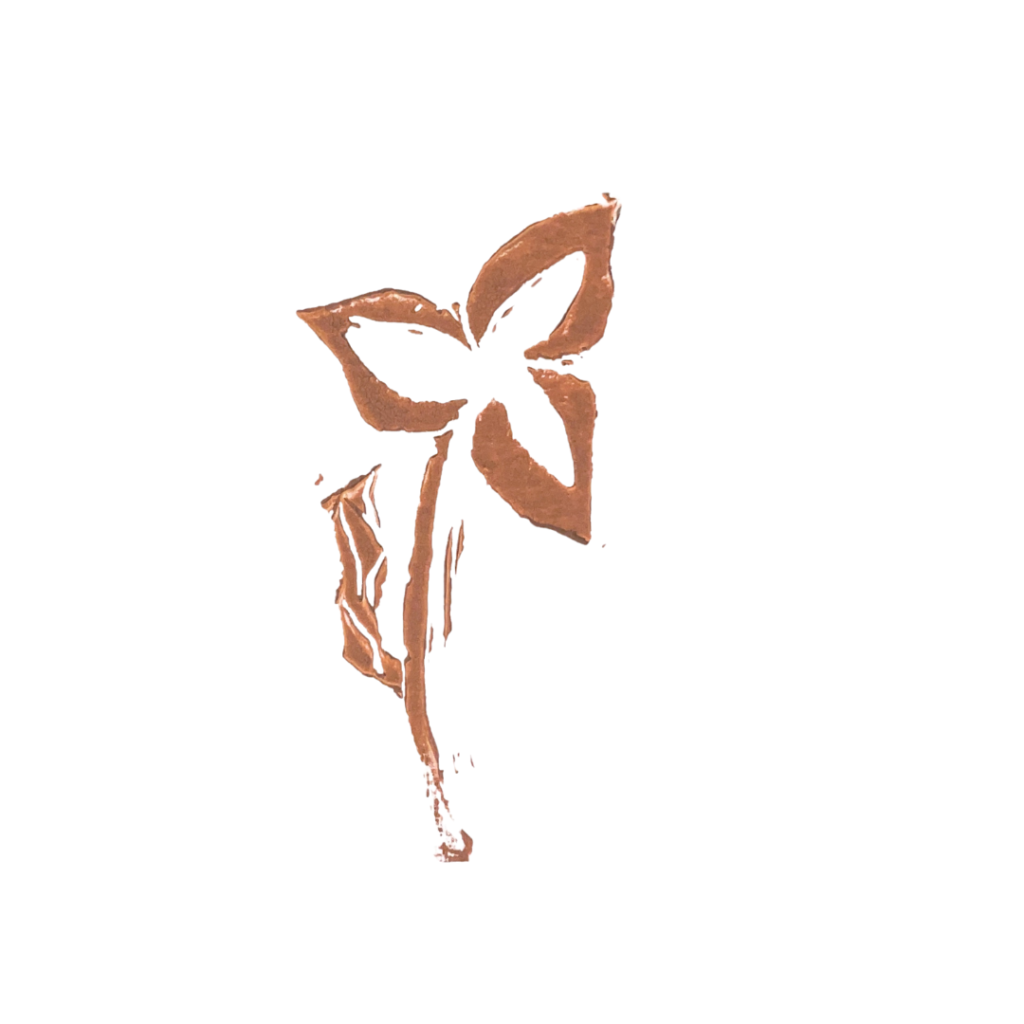
The blue iris represents purity, wisdom, faith and hope. Those are all values I strive to embody in my everyday life. I love knowledge and the pursuit of it. I try to be the most pure version of myself and to be vulnerable. I try to provide hope even in the worst situations.
These are just six prints representing a collection of 25 others from this cohort. To visually indicate students’ commitment to their Hope Forward learning community, they bring their carvings together to create a collaborative piece at the end of the retreat—allowing them to envision themselves among a grander ecosystem to which they belong and from which they give and receive.
If you’re interested in learning more about this project or seeing other prints, feel free to email Hope Forward Program Coordinator Erin Drews: drews@hope.edu.


